Director: Kinji Fukasaku
Writer: Koichi Iiboshi, Kazuo Kasahara
Cast: Bunta Sugawara, Akira Kobayashi, Takeshi Kato, Tatsuo Umemiya, Hiroki Matsukata, Nobuo Kaneko, Hideo Murota, Shingo Yamashiro, Kunie Tanaka, Shinichiro Mikami, Ichiro Ogura, Asao Koike, Asao Uchida, Harumi Sone, Tatsuo Endo
Running Time: 101 min.
By Kyle Warner
The Battles Without Honor and Humanity series is best viewed back-to-back and never is that more true than with Proxy War and Police Tactics. The events of Proxy War ignite a gangland war that’s left unfinished at the end of that film and intensifies in Police Tactics, drawing the ire of civilians and forcing the police to act.
In the years following the end of World War II, the yakuza weren’t only tolerated, they were occasionally celebrated and even employed by the most unlikely of establishments (including both the Japanese and American governments). By the 1960s, Japan had rebuilt its country both structurally and economically, and people wanted to enjoy this new era of normality. The country would soon host the Olympics in 1964, but here were the yakuza, a group of thugs that’d missed the memo that their time was over. The world had moved on and it was unsympathetic to the men it had once romanticized as chivalrous anti-heroes.
After the violence between yakuza claims the lives of innocent civilians, the people of Hiroshima demand that the police put an end to the slaughter. The police—largely depicted here as an anonymous force of law and order—start by just making things difficult for the yakuza: they monitor every stronghold to prevent violent raids and, most importantly, they strangle the yakuza’s cash flow by halting money collection runs. Despite all of this, the rival gangs remain in a constant state of conflict. The bosses try to keep their young soldiers in line, but too many false starts for ending the war have made everybody jumpy. Instead of a unified assault, the battles of Police Tactics are more like guerilla warfare, as one side attacks the other and waits for the inevitable retaliation.
Caught in the middle of all this is Hirono (Bunta Sugawara), who’s aligning himself with former enemies and plotting to kill his one-time superiors. Though Hirono is one of the few bosses willing to end the war himself, his men are too protective of him and constantly throw themselves into the fray in his stead. At one point a policeman sneers at Hirono about how he can eat well and sleep comfortably while his men barely scrape by. Hirono bursts out that they live by a code that the cops couldn’t understand. For the longest time, Hirono was the one character cynical enough and smart enough to “get it.” But if there’s anything that Battles Without Honor and Humanity wants to get across is that this all-important code doesn’t exist, at least not anymore.
Along with the original Battles Without Honor and Humanity, I count Police Tactics as one my very favorites of the series. And considering I think so highly of the series, I suppose that makes Police Tactics one of my favorite films regardless of country or genre. Of the sequels, Police Tactics is the most similar in tone and execution to the first movie, giving us a documentary-style gangster epic with enough plot threads to make your head spin. There’s also a considerable amount of dark comedy, something unexpected from the series but certainly welcome.
I want to give special mention to the film’s most memorable characters and performances, of which there are many. Nobuo Kaneko (Ikiru) has the duty of playing one of the most dislikable gangsters ever put on film. He may not be the most violent, nasty, rapey, or insane villain, but he exhibits every other unlikable quality of a man in power that should make Yamamori universally despised. He may get fewer scenes in Police Tactics but Kaneko has a way of lingering on in the viewer’s conscious long after the character has stepped off the stage. Also worthy of praise is Kunie Tanaka (All About Our House) who plays Yamamori’s right-hand-man Makihara. In the beginning, Makihara was a cowardly mouse but he evolves into a man of violence with a short temper, and Tanaka is completely believable throughout the transformation. Akira Kobayashi (Retaliation) plays a cool yakuza at odds with Hirono, though the two are very much alike. Hiroki Matsukata (13 Assassins) returns to the series as a different character, here playing the terminally ill yakuza Fujita. And of course at the center of it all is Bunta Sugawara (Street Mobster) in the role that would rewrite his career. For the longest time, Sugawara was a supporting player in the films meant to showcase other stars. Sensing that Sugawara could go darker and uglier than those film idols, the actor became a favorite of Kinji Fukasaku for the director’s new wave of crime pics. Battles Without Honor and Humanity was a huge success, catapulting many men to stardom, especially Fukasaku and Sugawara. Cool but also comfortable with the image of a bad guy, Sugawara owns the role of Shozo Hirono and it’s impossible to imagine anyone else in the part. The actor would go onto make many more films – some of them classics – but this is the role he’ll be remembered for.
Arrow Video has released the Battles Without Honor and Humanity series as a limited edition Blu-ray/DVD multi-format box set with new special features. Included on this disc is a 17 minute featurette called Remembering Kinji, where film critic Sadao Yamane and the director’s son Kenta Fukasaku (Battle Royale 2). Together they discuss Kinji Fukasaku’s artistic influences, his politics, and his impact. I enjoyed some of the insights here, particularly from Yamane. Also included is a 15 minute interview with assistant director Toru Dobashi, who shares some stories about Fukasaku’s work methods and memories from the set. Though there’s less to learn from Dobashi’s interview, it’s the more entertaining extra. Also included on the disc is the film’s original trailer.
In Proxy War it felt like cast and crew fully understood the beast they’d created. Things clicked. Nothing felt false. Proxy War was all about setting up the game, then Police Tactics comes in, flips the game board and laughs as all the pieces go flying. This film has all the chaotic violence that the series is known for as well as the well-researched, contemplative drama that’s often overlooked. Battles Without Honor and Humanity: Police Tactics is fantastic.
Kyle Warner’s Rating: 9/10

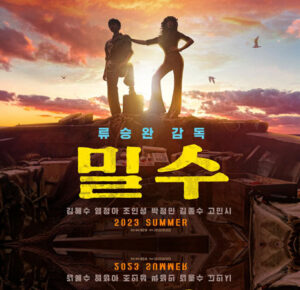



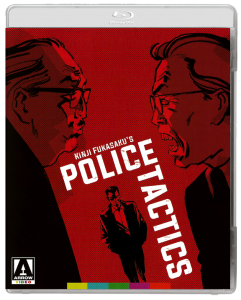
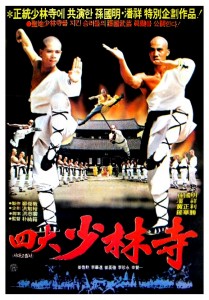
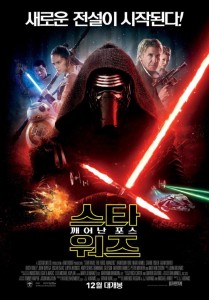
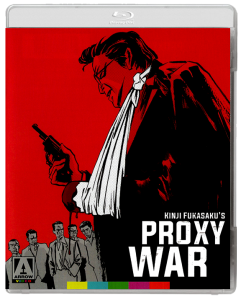
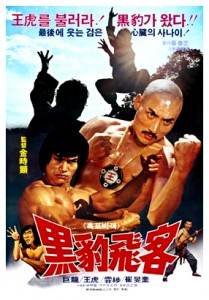
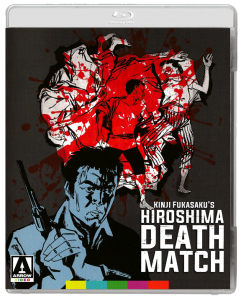

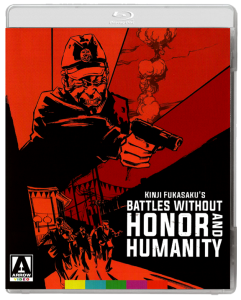
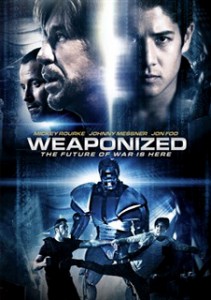
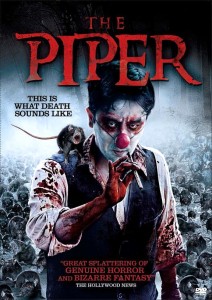
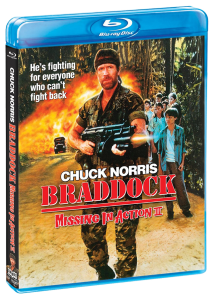
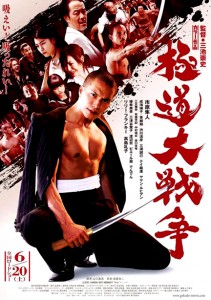
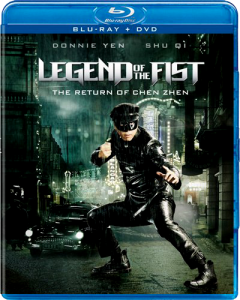
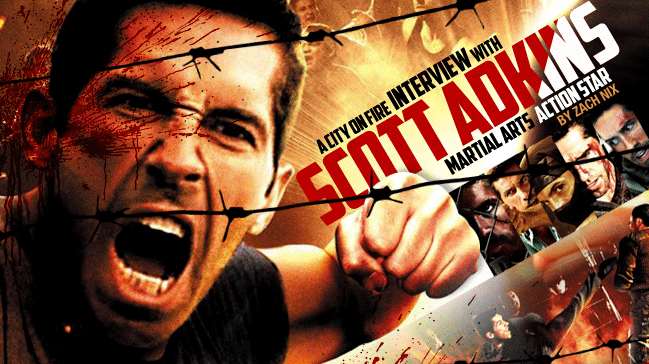
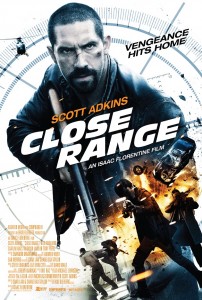
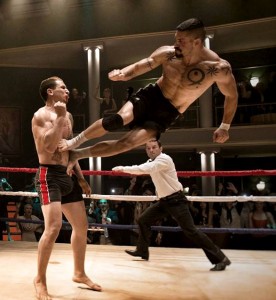
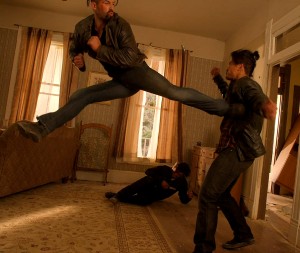
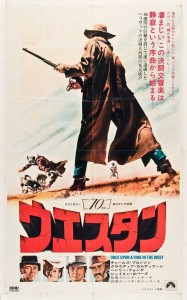
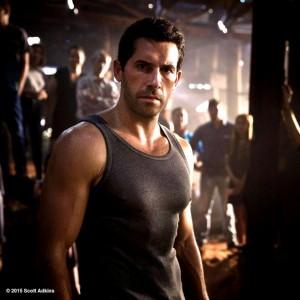
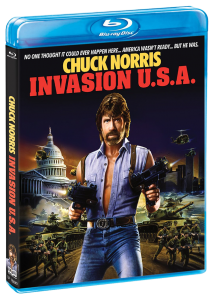




2 Comments